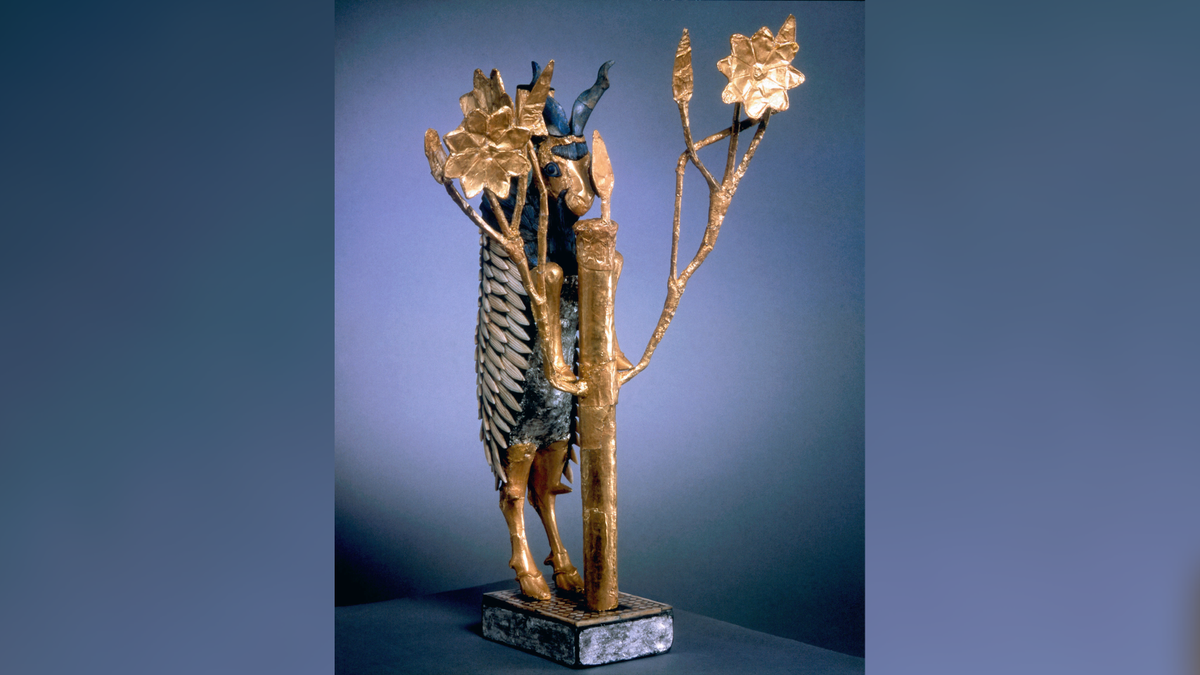Now Reading: 4,500-Year-Old Gold Statue Unearthed from Ur’s Royal Cemetery
-
01
4,500-Year-Old Gold Statue Unearthed from Ur’s Royal Cemetery
4,500-Year-Old Gold Statue Unearthed from Ur’s Royal Cemetery

Speedy Summary:
- Artifact Name: “Ram in the Thicket” statuettes.
- Description: Gold and lapis lazuli statues possibly depicting markhor goats, standing on decorated bases.
- Origin: Found at the Royal Cemetery at Ur (modern tell el-Muqayyar, Iraq) in 1928 by archaeologist Leonard Woolley.
- Dating: Circa 2550 B.C., from ancient Mesopotamia during a royal burial that included human sacrifices-68 women and five men buried alongside one royal individual.
- Materials Used: Wood (covered with gold leaf), copper (ears), silver (bellies), lapis lazuli (horns and fleece); bases feature mosaic designs of shells, red limestone, and lapis lazili.
- Current Locations of Artifacts: One statue is housed at penn Museum in Philadelphia; the other at British Museum in London.
- Symbolism & Usage: Likely offering stands tied to rituals for sun god Shamash involving goat or sheep sacrifices. Decorations perhaps symbolize heaven, Earth, mountains, and sunrise-the latter being linked to destiny and cosmic beliefs.
Indian Opinion Analysis:
The discovery of ancient artifacts like “Ram in the Thicket” offers critical insights into early civilizations’ artistic achievements, ritual practices, and worldview. Mesopotamia played a pivotal role as one of humanity’s earliest urban societies-and these objects highlight their advanced craftsmanship using precious materials such as gold and lapis lazuli sourced from distant regions like Central Asia. India’s historical ties to regions producing resources such as lapis lazuli may invite scholarly exploration into trade networks connecting South Asia with Mesopotamia during antiquity.Artifacts also reflect how interconnected cosmological beliefs shaped rituals across cultures; parallels with Indian traditions tied to sunrise worship or sacrificial rites suggest commonalities deserving further comparisons. While primarily housed globally today-at institutions like British or Penn Museums-theorizing access for broader audiences could enrich humanity’s shared heritage discourse without leading controversies over ownership disputes proliferating globally between nations rooted who origin sights Read more here.























